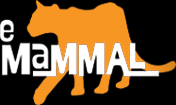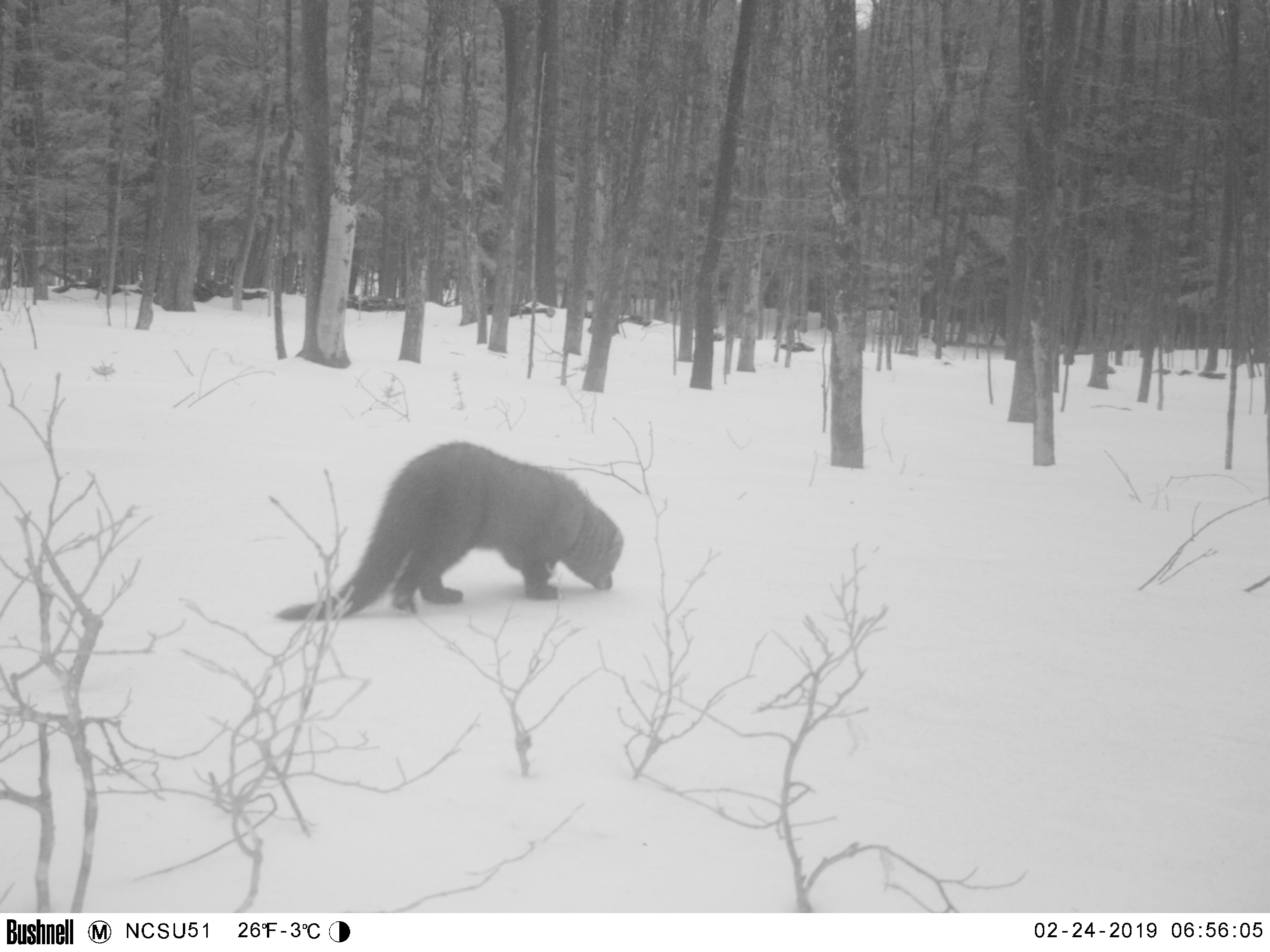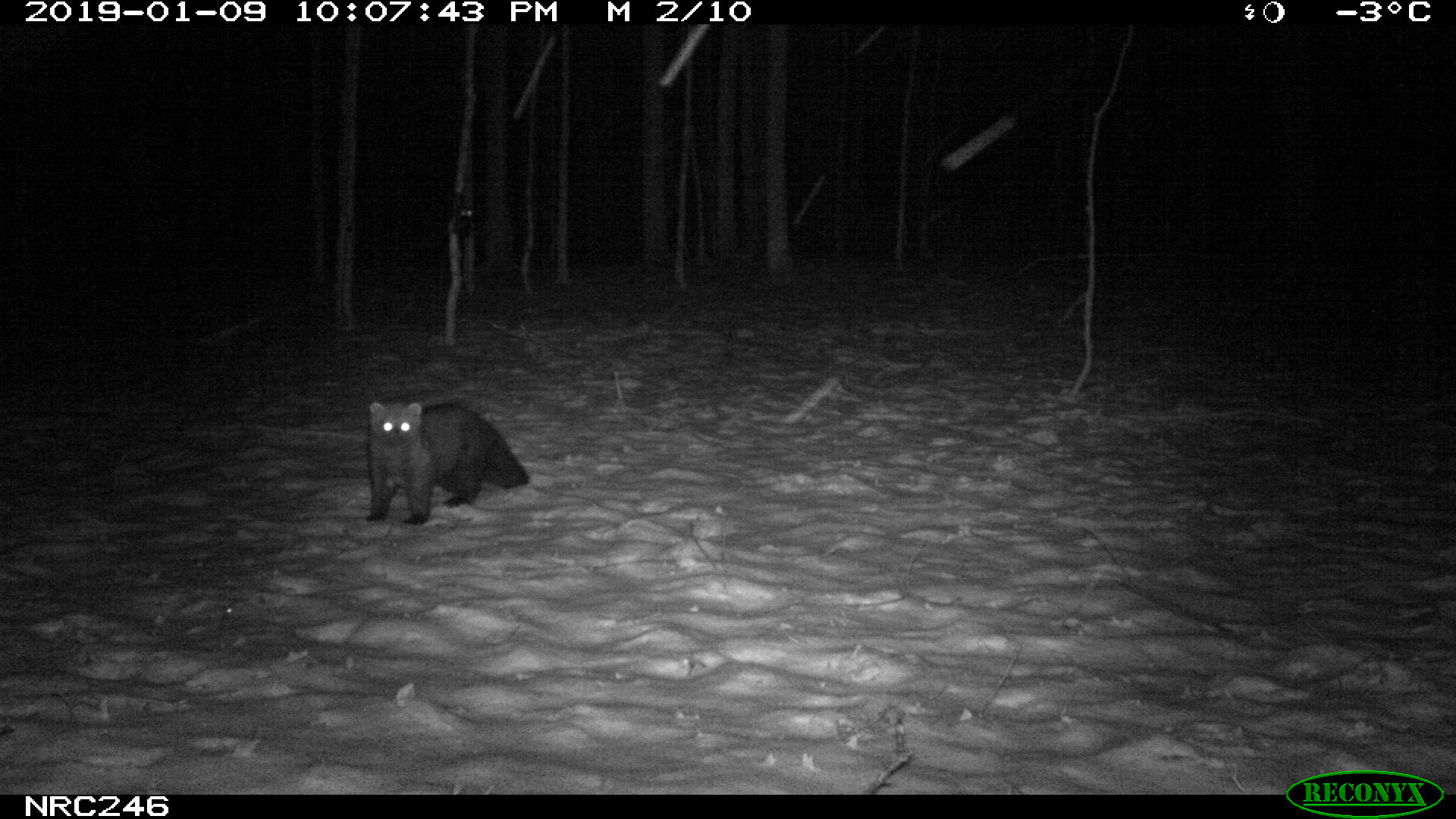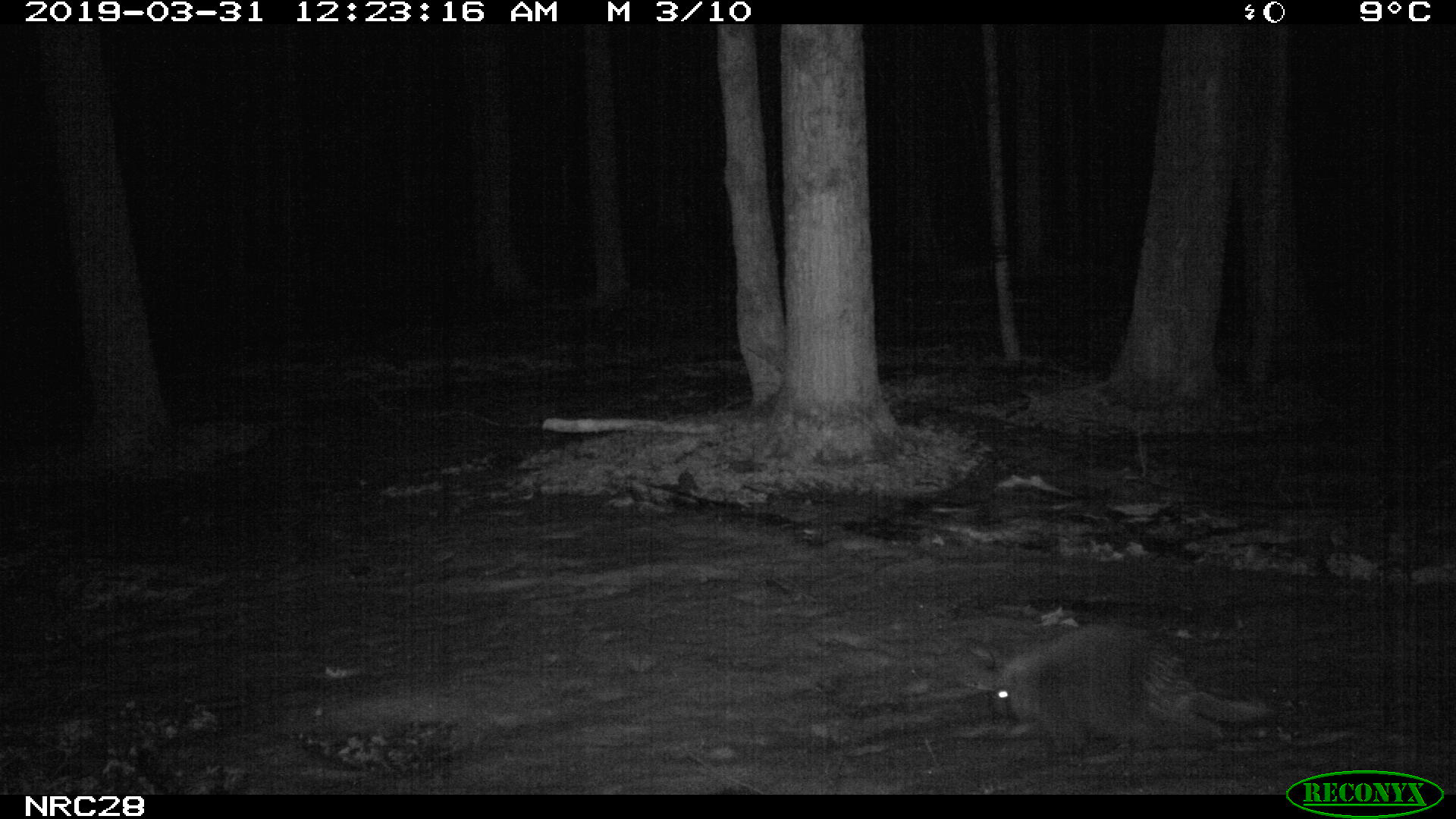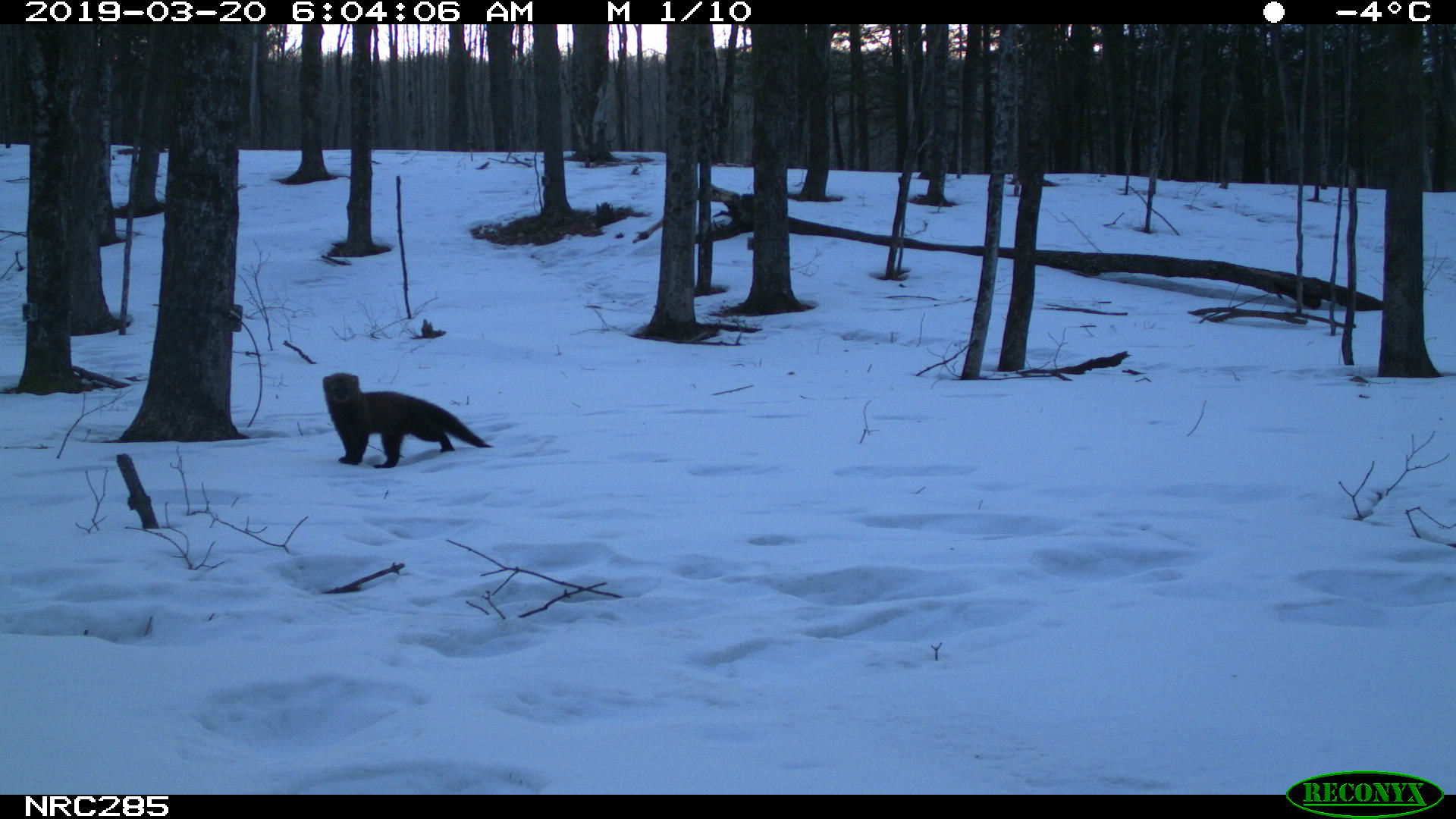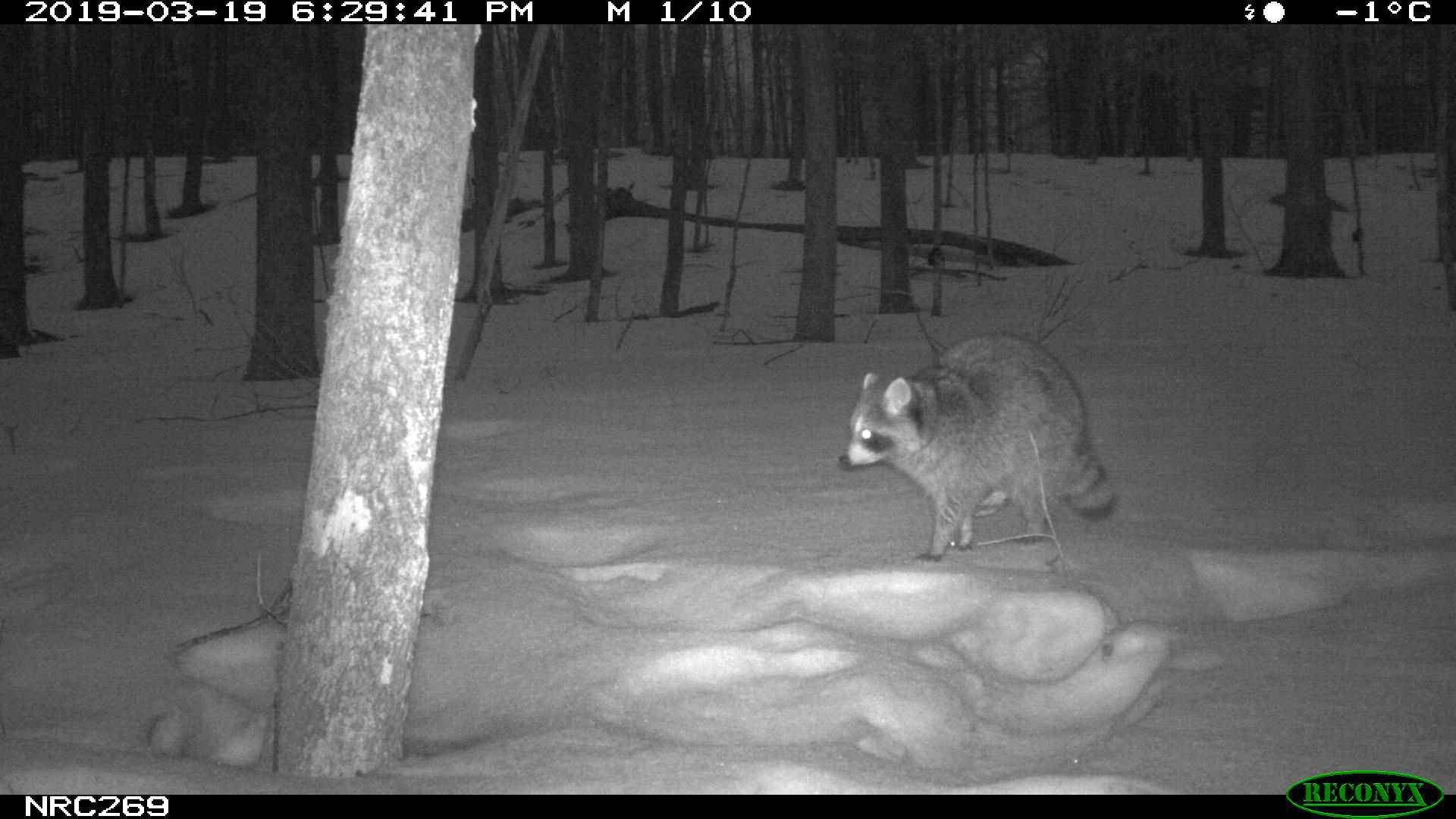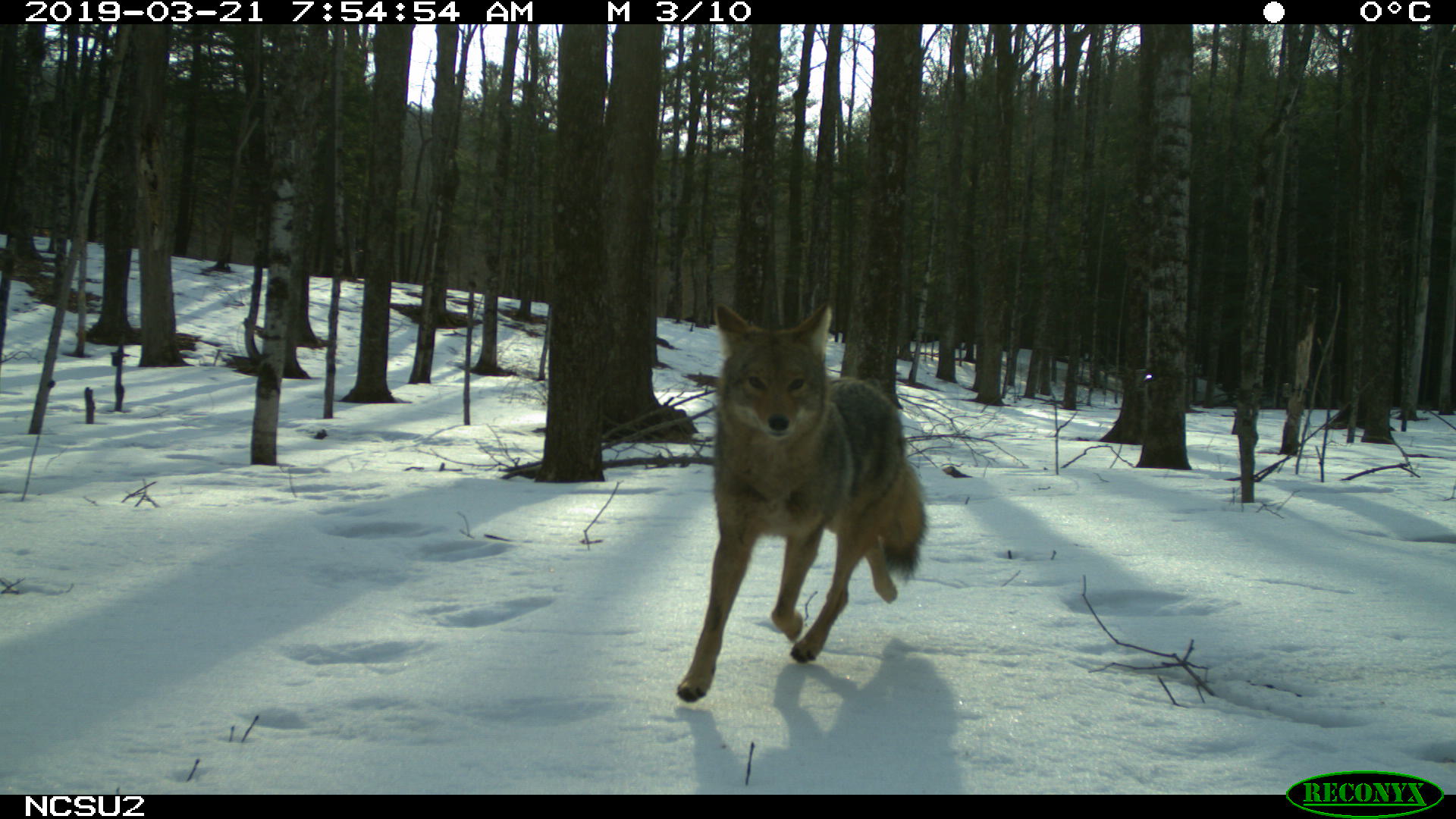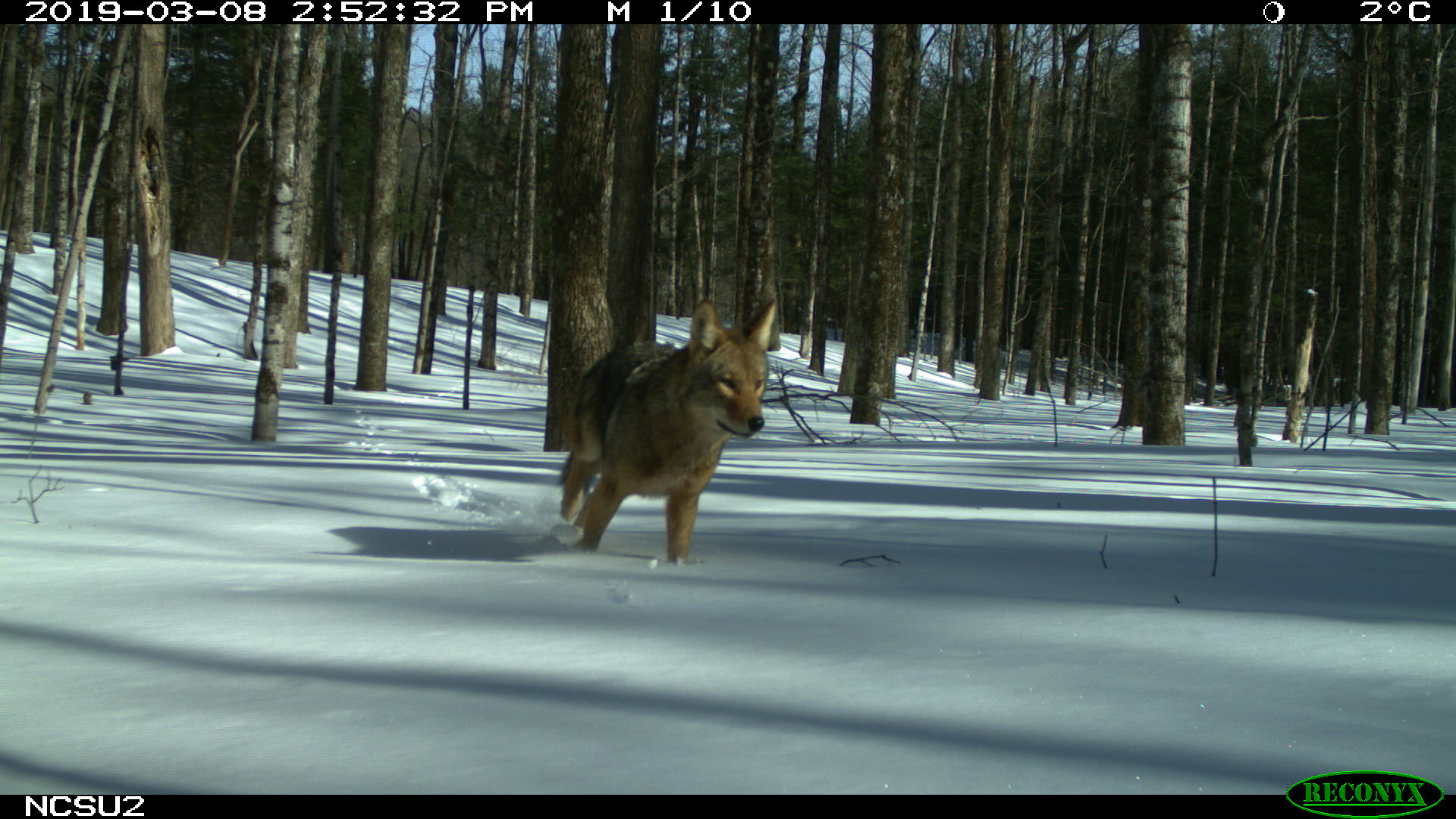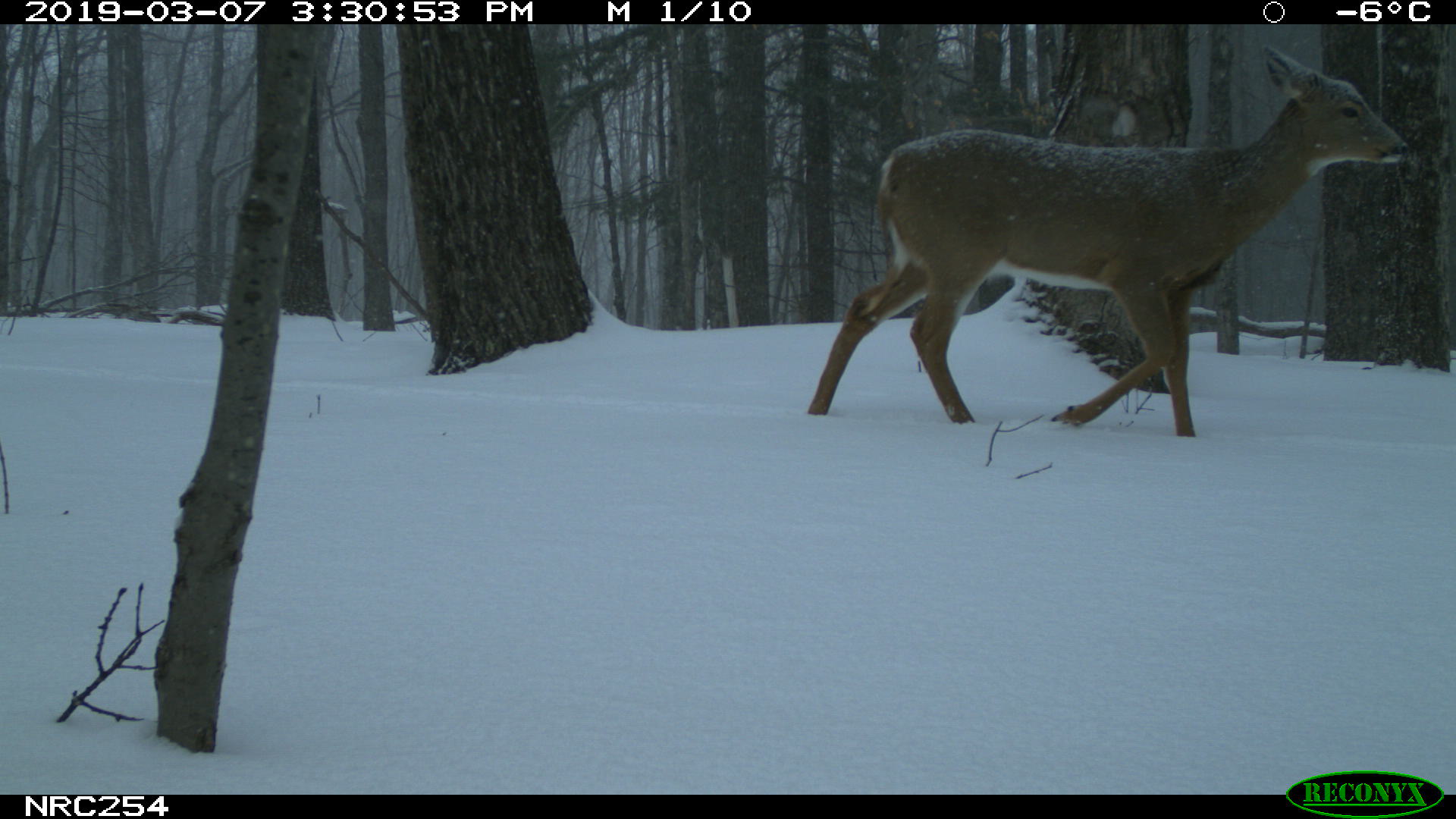Mammal Watching in the Huyck Preserve
This project aims to assess this variation in detection rates by comparing detections with known animal movement paths. During the winter of 2017-2018, we are running a high-density camera trap array (a 90 x 60 m plot, with 54 camera traps randomly located within 54, 10 x 10 m grid cells) within a hardwood forest stand at the Huyck Preserve in Rensselaerville, New York.
Camera traps are popular tools for monitoring wildlife populations globally. They have tremendous potential, but species’ detection probabilities vary across sites, species, and camera trap models and are rarely quantified, thereby limiting their value for drawing large scale conclusions. To assess this variation, we compared camera trap detection rates of passing carnivores with observed carnivore movement patterns through the study plot as recorded via snow tracking surveys. We established a snow tracking survey protocol and a 0.54 ha camera trapping plot, containing 54, non-baited camera traps arranged in a 6 by 9 grid within the Edmund Niles Huyck Preserve. Camera traps varied in make and model and focal bearing and were run between 22 December 2017 through 28 March 2018. During this time our cameras functioned for 4603 of camera 5184 days (88.8%; 54 cameras * deployment days) recording 396 passes by 8 identifiable mammal species (0.09 passes per deployment day), with white-tailed deer (Odocoileus virginianus) and grey squirrel (Sciurus carolinensis) being the most frequent (171 and 119, respectively). We recorded passes by four carnivores: raccoon (Procyon lotor; 43), coyote (Canis latrans; 29), fisher (Pekania pennanti; 17), and red fox (Vulpes vulpes; 5). Interestingly, despite our cameras traps being deployed for 96 days, we observed no new mammal species after day 19, suggesting that a 3-week deployment would be sufficient if the goal is to document the winter-active mammal species at the Huyck Preserve. Unfortunately, the infrequency of suitable snowfall events limited our snow tracking survey opportunities to four events. Of those four, two had suitable snow tracking conditions and had carnivore activity though our plot. In total, we snow tracked and mapped a pass by a coyote and a red fox through the plot. The red fox was detected by a Reconyx PC800, but was not detected by a Bushnell nor a Reconyx HC500, despite passing within their measured detection radius. The coyote however was detected by all 7 camera traps whose detection radius it entered, suggesting a possible body size effect. Our preliminary findings suggest the importance of validating camera trap detection rates with independent data before estimating species abundance and distribution. We expect a second field season will yield more snow tracking data allowing us to build an adjusted and validated occupancy modeling approach, ultimately facilitating a regional species occupancy model across an urban to wild landscape gradient.
Camera traps are popular tools for monitoring wildlife populations globally. They have tremendous potential, but species’ detection probabilities vary across sites, species, and camera trap models and are rarely quantified, thereby limiting their value for drawing large scale conclusions. To assess this variation, we compared camera trap detection rates of passing carnivores with observed carnivore movement patterns through the study plot as recorded via snow tracking surveys. We established a snow tracking survey protocol and a 0.54 ha camera trapping plot, containing 54, non-baited camera traps arranged in a 6 by 9 grid within the Edmund Niles Huyck Preserve. Camera traps varied in make and model and focal bearing and were run between 22 December 2017 through 28 March 2018. During this time our cameras functioned for 4603 of camera 5184 days (88.8%; 54 cameras * deployment days) recording 396 passes by 8 identifiable mammal species (0.09 passes per deployment day), with white-tailed deer (Odocoileus virginianus) and grey squirrel (Sciurus carolinensis) being the most frequent (171 and 119, respectively). We recorded passes by four carnivores: raccoon (Procyon lotor; 43), coyote (Canis latrans; 29), fisher (Pekania pennanti; 17), and red fox (Vulpes vulpes; 5). Interestingly, despite our cameras traps being deployed for 96 days, we observed no new mammal species after day 19, suggesting that a 3-week deployment would be sufficient if the goal is to document the winter-active mammal species at the Huyck Preserve. Unfortunately, the infrequency of suitable snowfall events limited our snow tracking survey opportunities to four events. Of those four, two had suitable snow tracking conditions and had carnivore activity though our plot. In total, we snow tracked and mapped a pass by a coyote and a red fox through the plot. The red fox was detected by a Reconyx PC800, but was not detected by a Bushnell nor a Reconyx HC500, despite passing within their measured detection radius. The coyote however was detected by all 7 camera traps whose detection radius it entered, suggesting a possible body size effect. Our preliminary findings suggest the importance of validating camera trap detection rates with independent data before estimating species abundance and distribution. We expect a second field season will yield more snow tracking data allowing us to build an adjusted and validated occupancy modeling approach, ultimately facilitating a regional species occupancy model across an urban to wild landscape gradient.
